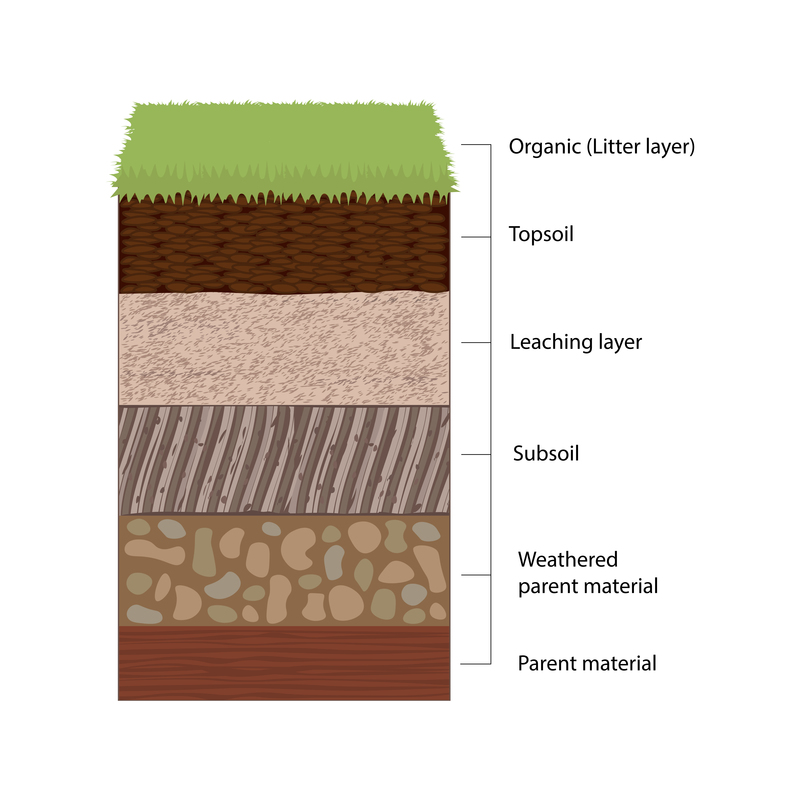What is Soil?
Sometimes described as the ‘skin of the earth’, soils are mixtures of minerals, organic matter, water and air together with countless organisms andthe decaying remains of once-living things. There are three main types of soil:
Sand is actually small grains of rock, worn away over time by weather. Sand grains range from 0.05 mm to 2 mm, so you can see them and feel them if you rub them between your fingers. Sandy soil isn’t very good at holding water or nutrients in it, so it isn’t very useful for growing plants.
Silt feels a bit like a powder and can be thought of as a very fine sand. It will hold water quite well compared with sand, but still not really enough to make it useful for growing plants. Silt grains are between 0.002 and 0.005mm wide! You’d have to use a magnifying glass if you wanted to make out those individual grains.
Clay has the smallest particles with individual grains measuring less than 0.002mm across. A gram of coarse sand contains about 1000 grains, but a gram of clay contains about 90 billion of them! Clay is very good at holding nutrients and water. It forms shapes well, which is why it is used to make objects such as cups and plates.
Other types of soil are mixtures of these three types. Loam is a mix of all three of the above and is useful for gardening because it holds nutrients well, but is also good at draining away excess water.
 If you were to dig a slice of the ground out from anywhere on Earth, you’d eventually hit rock. This slice of the ground would give you a ‘soil profile’ showing all the layers of the soil.
If you were to dig a slice of the ground out from anywhere on Earth, you’d eventually hit rock. This slice of the ground would give you a ‘soil profile’ showing all the layers of the soil.
The very top might have organic matter, such as grass growing on it. It might have a layer of ‘leaf litter’ This can be a thick or thin layer, or it may not exist at all in some places. Next, you get to the topsoil. A clay and mineral layer follows, then the subsoil before you arrive at the rocky deposits beneath.
Read More: Why is Soil so Important?